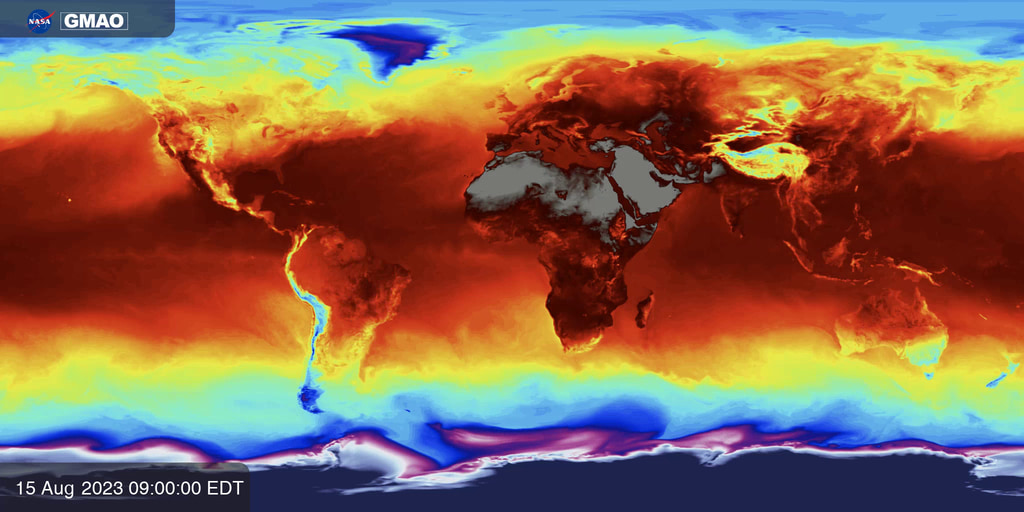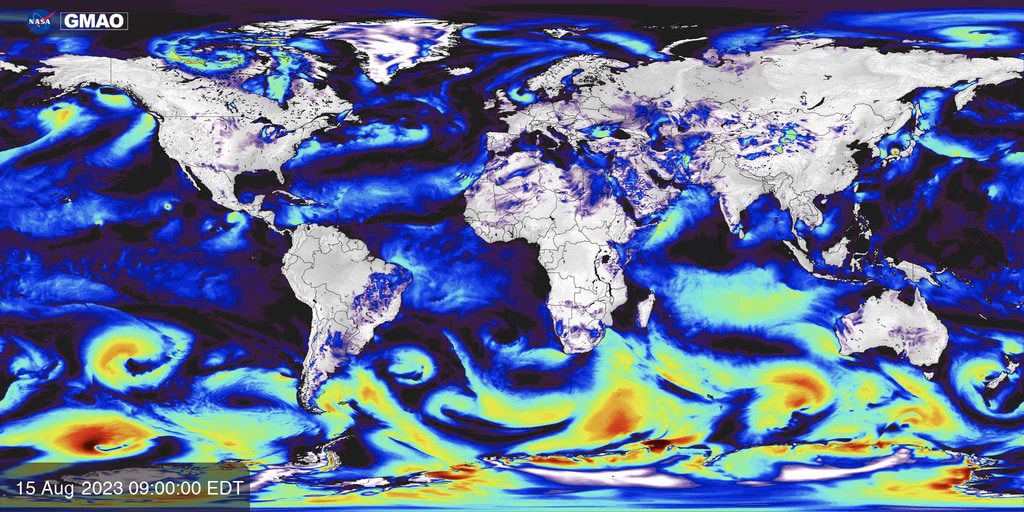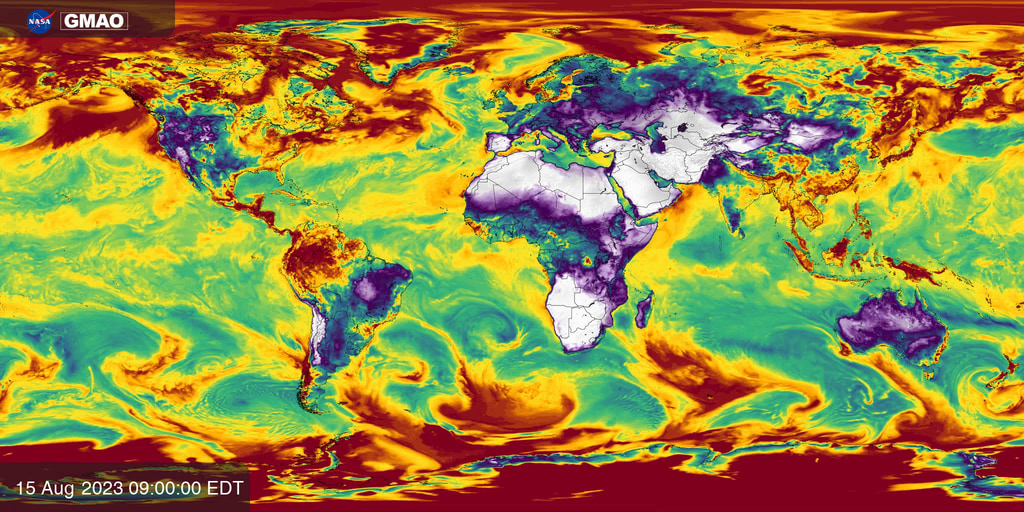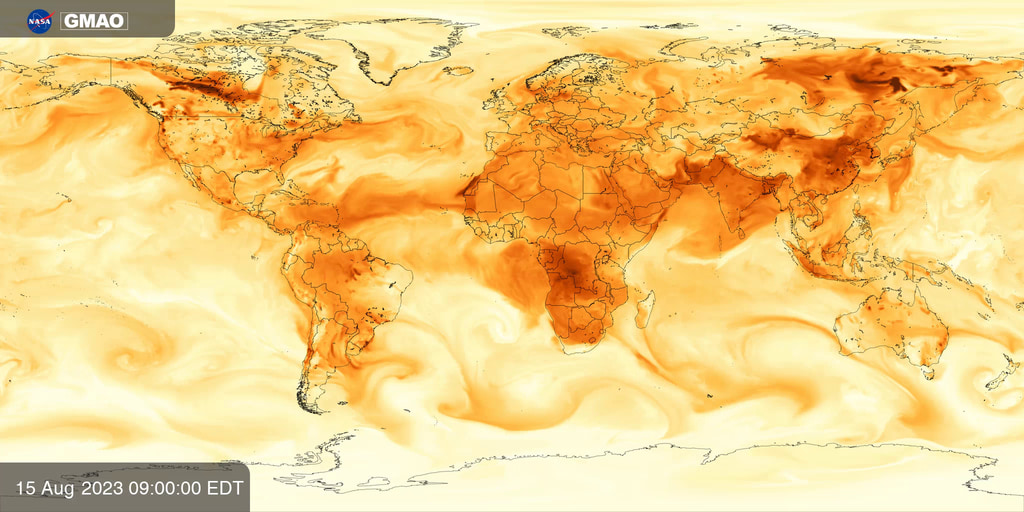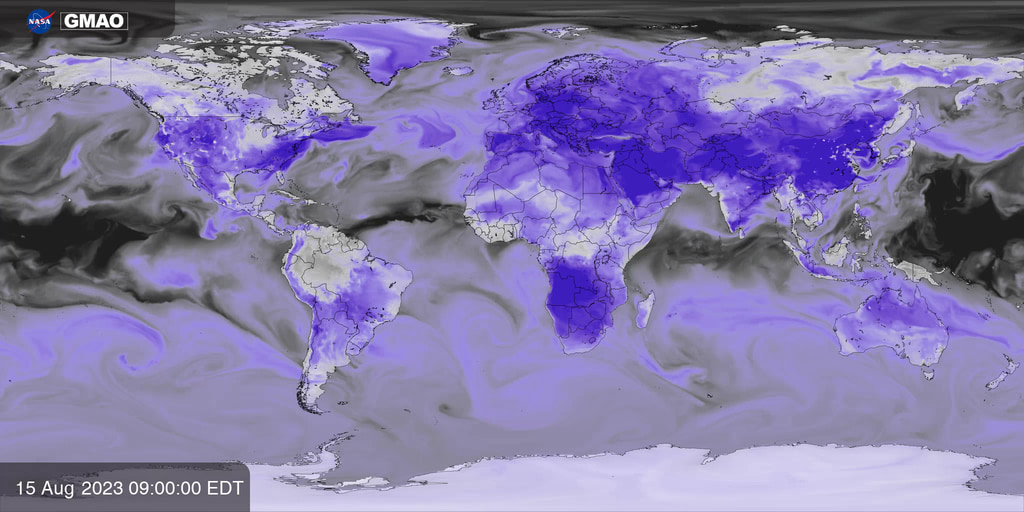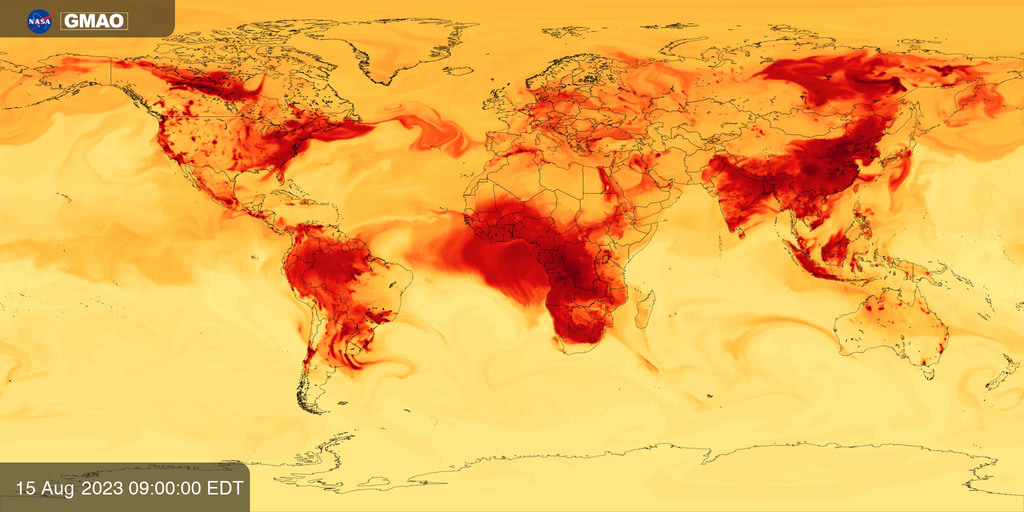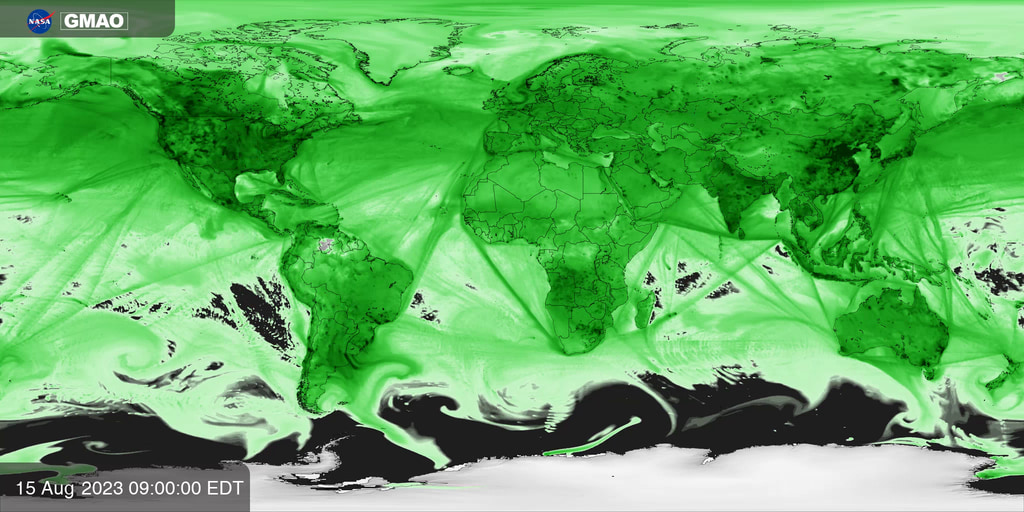GEOS-FP Precipitation and Clouds
Precipitation and clouds are calculated using fields from NASA’s GEOS-FP system. GEOS-FP combines millions of weather observations with a predictive model to create a global best estimate of weather conditions, which can be used to estimate the formation of clouds along with rain and snowfall.
Weather models begin their forecasts by integrating observations from ground stations, aircraft, balloons, and a growing constellation of Earth observing satellites to estimate the most realistic atmospheric state. The Goddard Earth Observing System Forward Processing (GEOS-FP) system is a research model maintained by NASA’s Global Modeling and Assimilation Office to demonstrate innovative new ways to use satellite data to improve predictions of weather, air quality, and greenhouse gases and to help NASA collect new observations of our home planet. These models use complex equations to track the formation of clouds and estimate the amount of rainfall they will produce.
This animation overlays total precipitation, including both rain and snow, atop simulated cloud fields shaded by their optical thickness. Precipitation patterns are shifting as a result of climate change because warmer temperatures allow the atmosphere to evaporate and store more water vapor. In the northeastern U.S., communities have experienced a higher percentage of total rain falling during severe storms, which is concerning because it can raise the risk of hazards like flash floods and result in a smaller percentage of rain replenishing ground water supplies. Scientists are also tracking changes in the frequency and impact of atmospheric rivers in the western U.S. In addition to producing precipitation, clouds play a critical role in climate. Depending on their elevation, thickness, and the presence of aerosol particles, clouds can either reflect sunlight (cooling the planet) or trap heat emitted from Earth’s surface (heating the planet). The degree to which cloud properties may change in coming decades is one of the largest sources of uncertainty in climate projections. NASA is working to find new ways to measure the properties of clouds and precipitation to help improve the ability to predict both short term changes in weather and long term changes in climate.
For More Information
Credits
Please give credit for this item to:
NASA’s Global Modeling and Assimilation Office
-
Visualizer
- Joseph V. Ardizzone (NASA/GSFC)
Series
This page can be found in the following series:Datasets used
-
GEOS-FP
ID: 1196Documentation: Lucchesi, R., 2018: File Specification for GEOS FP. GMAO Office Note No. 4 (Version 1.2), 61 pp, available from https://gmao.gsfc.nasa.gov/pubs/docs/Lucchesi1203.pdf
This dataset can be found at: https://fluid.nccs.nasa.gov/weather/
See all pages that use this dataset
Note: While we identify the data sets used on this page, we do not store any further details, nor the data sets themselves on our site.
Release date
This page was originally published on Tuesday, September 26, 2023.
This page was last updated on Tuesday, June 10, 2025 at 2:04 PM EDT.
